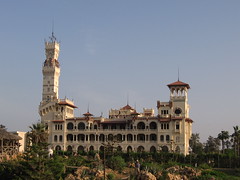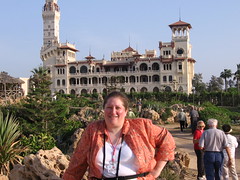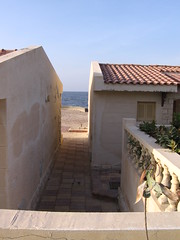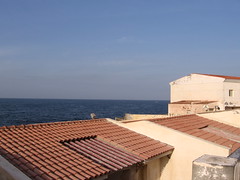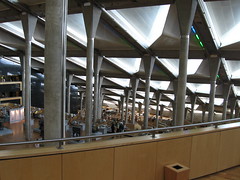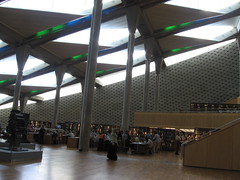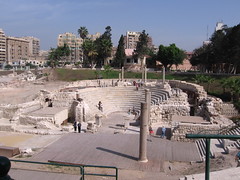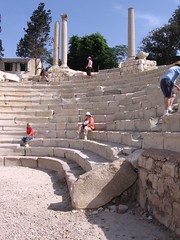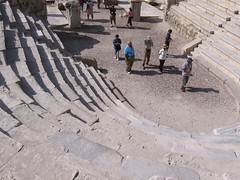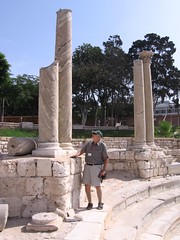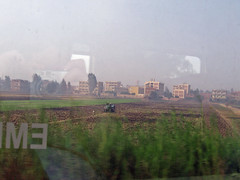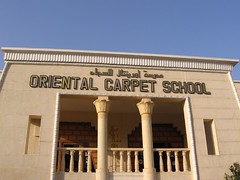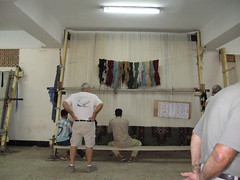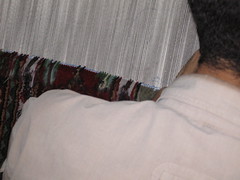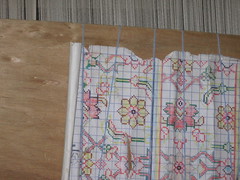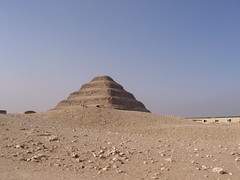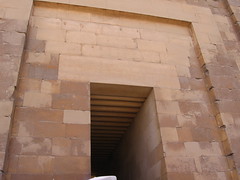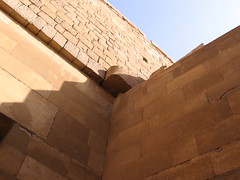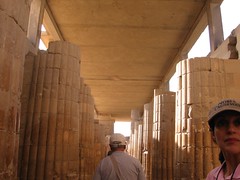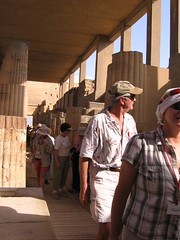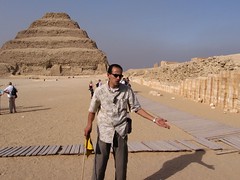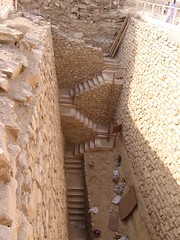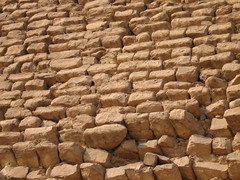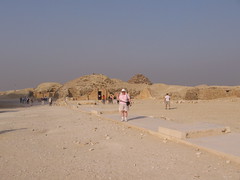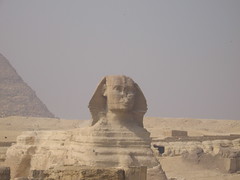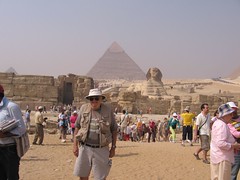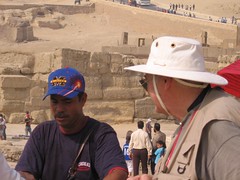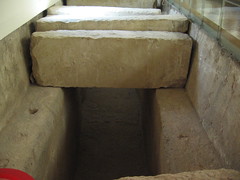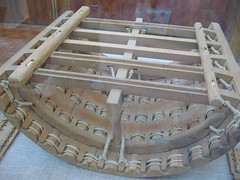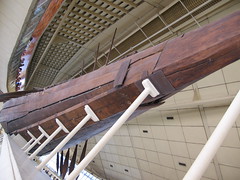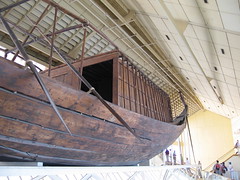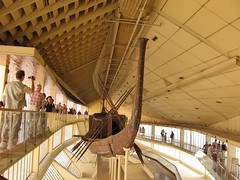We left the palace grounds and headed back to the old section of Alexandria. We were driving on the same road we'd come in on, which was right along the shoreline. This city has some amazing contrasts. For one thing, there are some truly lovely buildings, both very new and old but well maintained along this primo stretch of coast, but they're cheek-by-jowl next to structures that look like they should have been condemned back in the Nixon years. It's hard to imagine why they're allowed to take up such valuable real estate, though to be fair, these buildings are maybe 20 feet back from an extremely busy street and it would be terribly disruptive to tear them down and build something else. Maybe nobody can get a permit!
It was pretty late afternoon when we pulled up at the quay where we could see the Fort of Quaitbey, whose foundation is where the Lighthouse (Pharos) of Alexandria was up until the 1300s. The pier was full of tourists, both Western and Egyptian
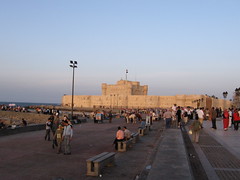
but it wasn't crowded and the air was so nice, with a cool sea breeze. Daddy and I took turns taking our pictures in front of it
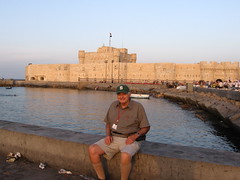
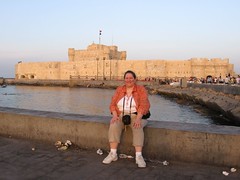
and I took pictures of some Alexandrian cats for my cat-loving brother:
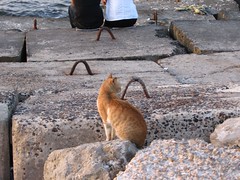
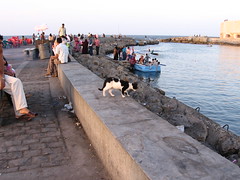
I saw some of the vendors feeding them, and I bet the tourists do too, so they're pretty plump for feral cats. Living by water can't hurt either - here, fishy, fishy!
Everywhere you looked, there was something to see:
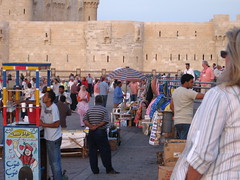
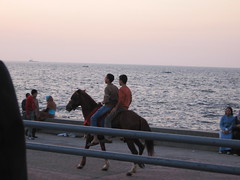
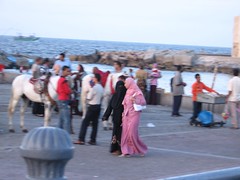
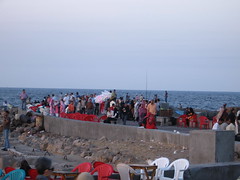
And here are our guides and bus drivers in their most characteristic moments, grabbing a chance for a smoke:

Just as the sun set we got back on our buses and headed for Cairo. The drive was long and kind of horrible because 1) we still remembered how nice and roomy the train seats had been, 2) it was dark out so there was nothing to look at, 3) the springs in the bus were kinda shot, so we were bouncing a lot [which did great things for the handwriting in my travel diary, let me tell you], and 4) there was some kind of horrifying traffic jam as we got near to Cairo. Mercifully, we stopped about halfway at a place called - no kidding - Omar's Oasis, for a potty break. Once again, we found that when our itinerary read "Dinner on your own", it was code for "You won't have time to eat"!

